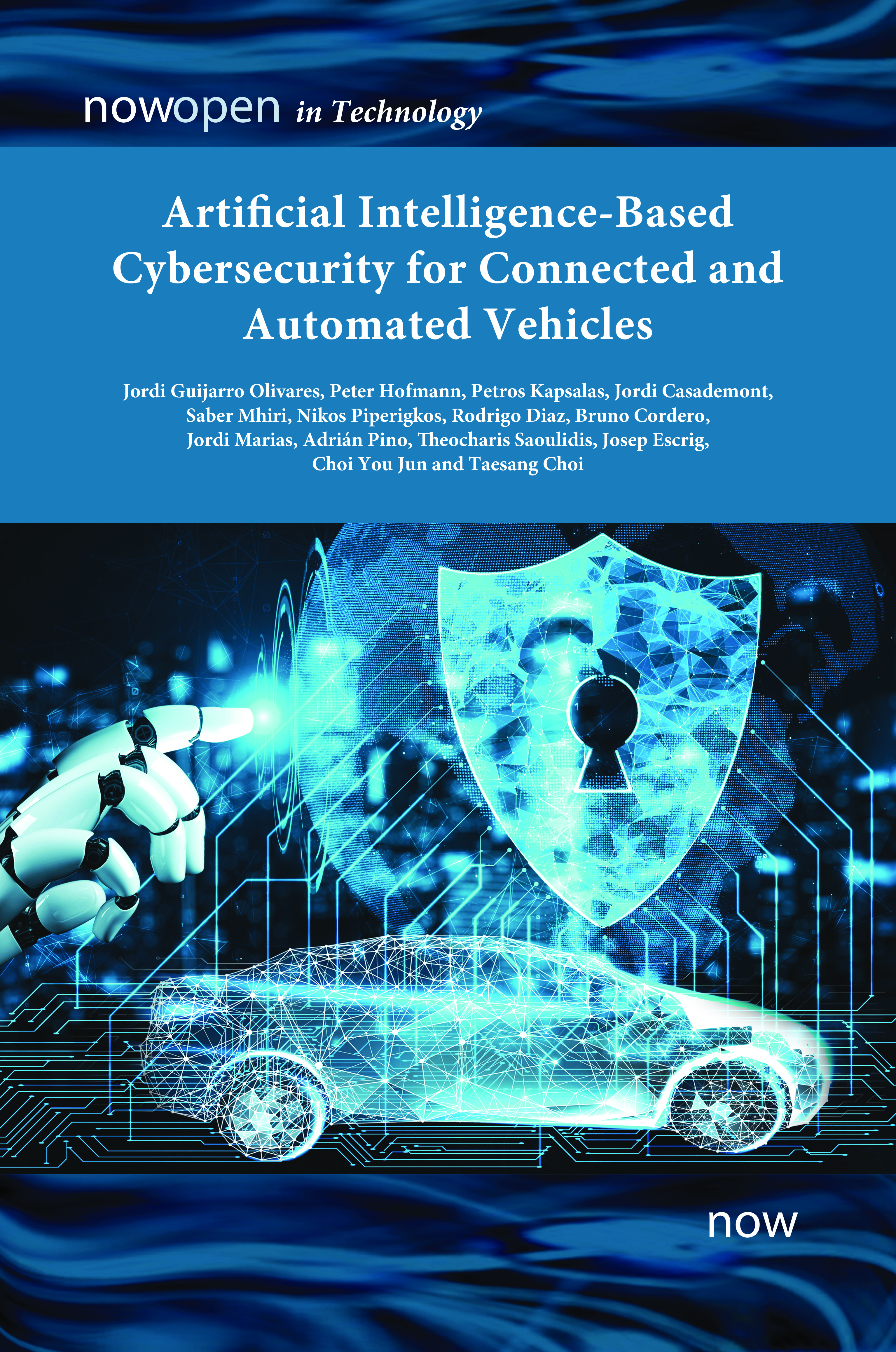Artificial Intelligence-based Cybersecurity for Connected and Automated Vehicles

Edited by Jordi Guijarro Olivares, i2CAT, Spain, jordi.guijarro@i2cat.net | Peter Hofmann, Deutsche Telekom Security, Germany | Petros Kapsalas, Panasonic Automotive Systems Europe, Greece | Jordi Casademont, Universitat Politècnica de Catalunya, Spain | Saber Mhiri, i2CAT, Spain | Nikos Piperigkos, University of Patras, Greece | Rodrigo Diaz, ATOS, Spain | Bruno Cordero, i2CAT, Spain | Jordi Marias, i2CAT, Spain | Adrián Pino, i2CAT, Spain | Theocharis Saoulidis, SIDROCO, Cyprus | Josep Escrig, i2CAT, Spain | Choi You Jun, KATECH, South Korea | Taesang Choi, ETRI, South Korea
Publication Date: 29 Dec 2022
Suggested Citation: Jordi Guijarro Olivares (ed.), Peter Hofmann (ed.), Petros Kapsalas (ed.), Jordi Casademont (ed.), Saber Mhiri (ed.), Nikos Piperigkos (ed.), Rodrigo Diaz (ed.), Bruno Cordero (ed.), Jordi Marias (ed.), Adrián Pino (ed.), Theocharis Saoulidis (ed.), Josep Escrig (ed.), Choi You Jun (ed.), Taesang Choi (ed.) (2022), "Artificial Intelligence-based Cybersecurity for Connected and Automated Vehicles", Boston-Delft: now publishers, http://dx.doi.org/10.1561/9781638280613
Downloaded: 37674 times
Description
The damaging effects of cyberattacks to an industry like the Cooperative Connected and Automated Mobility (CCAM) can be tremendous. From the least important to the worst ones, one can mention for example the damage in the reputation of vehicle manufacturers, the increased denial of customers to adopt CCAM, the loss of working hours (having direct impact on the European GDP), material damages, increased environmental pollution due e.g., to traffic jams or malicious modifications in sensors’ firmware, and ultimately, the great danger for human lives, either they are drivers, passengers or pedestrians.
Connected vehicles will soon become a reality on our roads, bringing along new services and capabilities, but also technical challenges and security threats. To overcome these risks, the CARAMEL project has developed several anti-hacking solutions for the new generation of vehicles.
CARAMEL (Artificial Intelligence-based Cybersecurity for Connected and Automated Vehicles), a research project co-funded by the European Union under the Horizon 2020 framework programme, is a project consortium with 15 organizations from 8 European countries together with 3 Korean partners. The project applies a proactive approach based on Artificial Intelligence and Machine Learning techniques to detect and prevent potential cybersecurity threats to autonomous and connected vehicles. This approach has been addressed based on four fundamental pillars, namely: Autonomous Mobility, Connected Mobility, Electromobility, and Remote Control Vehicle. This book presents theory and results from each of these technical directions.
-
ISBN: 978-1-63828-060-6
166 pp. Price: $125.00 Buy Book (hb) -
ISBN: 978-1-63828-061-3
166 pp. Open Access (.pdf) This is published under the terms of CC BY-NC
